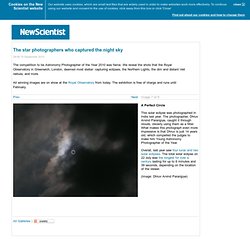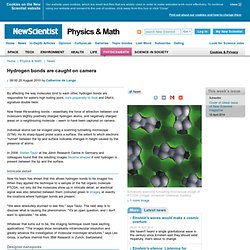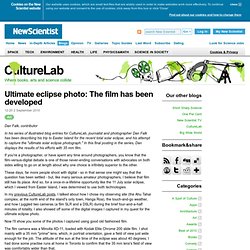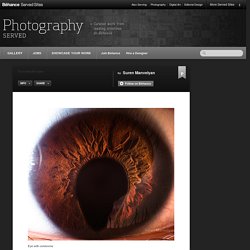

Wild Close-Ups of Rare Mammals From Huge Camera Trap Study. Meet the future of photography. Before you draw conclusions from my recent post that I am some bitter photography-hater, I want to set the record straight.

I am not a photography-hater (although I reserve the right to be a stock-photography-stealing-good-illustration-opportunities hater), and to prove it to you, I want to introduce you to the future of photography. I recently got wind of a new technology that has the potential to overturn photography as we know it. It is still in the development stages, but if the images on their website are any indication of what they’ve accomplished so far, this technology is powerful. I daresay I’m a believer. The camera is called Lytro and it was born of Stanford graduate Ren Ng’s 2006 dissertation on light wave physics. Snap now, focus later? Traditional cameras function much like our eyes.
Traditional cameras capture and record light in much the same way as our eyes do. By contrast, the Lytro camera has a sensor which more closely resembles that of an insect’s compound eye. Award-winning photographer looks into our eyes - Image 1. Divorce Orchid (aka Fire Orchid or Masdevallia veitchiana) in Peru. The Ground Can Be Used as a Camera. Here Is Beautiful Evidence. Wellcome Images. The star photographers who captured the night sky - Image 7. 09:06 10 September 2010 The competition to be Astronomy Photographer of the Year 2010 was fierce.

We reveal the shots that the Royal Observatory in Greenwich, London, deemed most stellar: capturing eclipses, the Northern Lights, the dim and distant Veil nebula, and more. All winning images are on show at the Royal Observatory from today. The exhibition is free of charge and runs until February. Image 7 of 8 A Perfect Circle This solar eclipse was photographed in India last year. Overall, last year saw four lunar and two solar eclipses. (Image: Dhruv Arvind Paranjpye) Blood of Tree, Blood of Me. Hydrogen bonds are caught on camera - physics-math - 20 August 2010. By affecting the way molecules bind to each other, hydrogen bonds are responsible for water's high boiling point, ice's propensity to float and DNA's signature double helix.

Now these life-enabling bonds – essentially the force of attraction between one molecule's slightly positively charged hydrogen atoms, and negatively charged areas on a neighbouring molecule – seem to have been captured on camera. Individual atoms can be imaged using a scanning tunnelling microscope (STM). As its sharp-tipped probe scans a surface, the extent to which electrons "tunnel" between the tip and surface indicates changes in height caused by the presence of atoms. In 2008, Stefan Tautz at the Jülich Research Centre in Germany and colleagues found that the resulting images became sharper if cold hydrogen is present between the tip and the surface. Intricate detail Now his team has shown that this allows hydrogen bonds to be imaged too. "We were absolutely stunned to see this," says Tautz. Designer nanopores. Ultimate eclipse photo: The film has been developed.
Dan Falk, contributor In his series of illustrated blog entries for CultureLab, journalist and photographer Dan Falk has been describing his trip to Easter Island for the recent total solar eclipse, and his attempt to capture the "ultimate solar eclipse photograph.

" In this final posting in the series, Dan displays the results of his efforts with 35 mm film. If you're a photographer, or have spent any time around photographers, you know that the film-versus-digital debate is one of those never-ending conversations with advocates on both sides willing to go on at length about why one choice is infinitely superior to the other. These days, far more people shoot with digital - so in that sense one might say that the question has been settled - but, like many serious amateur photographers, I believe that film still has its place.
And so, for a once-in-a-lifetime opportunity like the 11 July solar eclipse, which I viewed from Easter Island, I was determined to use both technologies. Your beautiful eyes. Behance Served Sites Served is a collection of sites that showcase category specific content from Behance, the world's leading platform for creative professionals across all industries.

View All Served Sites → photography Served Join Behance Hire a Designer Behance Project Shuffle Showcase & Discover Creative Work Sign up for free View Next Project → Cast your vote for top Particle Physics Photowalk photograph. On August 7, more than 200 photographers had the rare opportunity to go behind the scenes at five laboratories in Asia, Europe and North America as part of the first Global Particle Physics Photowalk.

Thousands of photographs were submitted to the laboratories for local and global competitions. The laboratories have made their choices, each nominating three photographs for global competition. Now it’s your turn – starting today, you may vote for up to three of your favorite photographs as part of the “people’s choice” global photowalk competition. Mwshadow_cherney_big.jpg (JPEG Image, 1800x1200 pixels) - Scaled (74. Book review: Impressions of Nature - A History of Nature Printing.